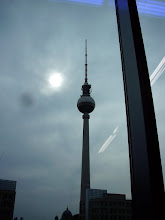Purchase capacity at half-mast, fear of the unemployment. French squeeze up the belt and reduce their budget to eat. In the break at lunch, the classic restaurants were the first ones to make expenses with a spectacular fall of the attendance. Too expense, the traditional “today's special” lost customers for the benefit of the sandwich, more economic. This big classic of the catering never was better in France. Having progressed from 5 to 8 % from 2003 till 2007, its sales jumped up to 11 % in 2008 with a sudden push in the second half-year. The market exceeds now the 6 billion euro of turnover. No decline of regime planned in 2009, according to the experts of the fast food. On the contrary, the crisis should again push the consumers towards the meals. With an average price from 3 to 4 euro only, the sandwich still has beautiful days in front of him. It is in France where the growth of the sandwich is by far the most spectacular. While the giants impose almost everywhere in Europe their model of fast food, France is the only country where the ham sandwich makes resistance. The French people consume still 8 times more sandwiches than hamburgers. Would the baguette typical from us be judged healthier and more balanced than its competitor across the Atlantic? It seems that moreover the tastes of the customers remain mainly very traditional : two sandwiches on three consist of cheese and\or cooked pork meats. If the sandwich resists as well, it is at first that we find it at the corner of every street. Besides thousands of traditional bakeries sell it at lunch break, and French-style fast food (Paul, The Affectionate Crumb, Apple of Bread) grew, the last years, like mushrooms. A unique density of selling points in the world. In urban zones, the traditional café lost its monopoly of the snack. Even supermarkets exploit the vein by dedicating shelves to sandwiches. A business so profitable that certain distributors open in the city centers small food stores, as Parisian Daily Monop. We can offer themselves lunch at the work place, included sandwiches. The breakthrough of the mass-market retailing is logical : in most of the cases, we swallow a sandwich on its workplace or outside, in a garden for example. No need of a place where to sit at the table. To replace a traditional lunch by a sandwich break becomes more attractive as the offer diversified itself. The traditional ham sandwich still represents the three-quarters of the sales of sandwiches based on baguette. In the basic “low-cost" were added more sophisticated varieties, surfing on the last food fashions (balance and thinness, exotic flavours, soil, biological). Certain restaurant chains very fashioned thse days, like Cojeans or Of Bert, occupy this crenel of the smart and light successfully. The feminine clientele which did not meet itself in the sausage-butter of the traditional bars applaud. In certain districts, we see opening certain luxury sandwich shops, as Be, created by Alain Ducasse. If the executives of big cities have fewer and fewer time to have lunch, around thirty minute on average, no doubt for them they will not avoid their pleasure.
Subscribe to:
Post Comments (Atom)



No comments:
Post a Comment